|
Watering Houseplants?
|
|
|
That's one of the questions that I get asked frequently and the questioner invariably hates my response.
“When they need it!”
The average person with a new houseplant wants to be told “Three cups of water every six days.” or some similar easy to follow rule.

The reality of keeping houseplants watered properly is that you have to ask each plant what it wants. Its answer is dependent on a variety of factors that prevents the use of “three cups every six days,” rules.
How big is the plant?
How big is the pot?
How much light does it receive?
How dry is the air?
What time of year is it?
You get the idea. There are so many variables that affect a plants water consumption that the only advice I can give, is to water a plant when it needs water. Irritating isn’t it?
To Wilt is To Beg
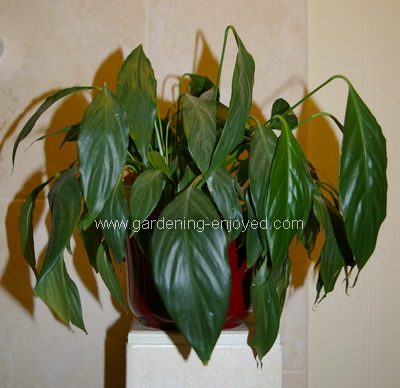
The real purpose of this page is to try and give you easy ways to ascertain when a plant needs water. The most obvious is when you see all of its leaves wilting but that is a bad indicator to rely on. Most plants wilt only under extreme water stress and many species do not recover from wilting. So we must find a method that keeps the plant growing in a pot of soil that supplies the optimum water supply.
The first step is to find out what type of water regimen suits each of your plants. Those infamous care tags that accompany plants will give you some clue. For the more adventurous, there is the standard bit of research to find out the natural habitat of each of your plants and that will certainly be a good guide. Most plants that we try to grow indoors can realistically be put into one of three categories that should make “when to water?” a simpler question to answer.
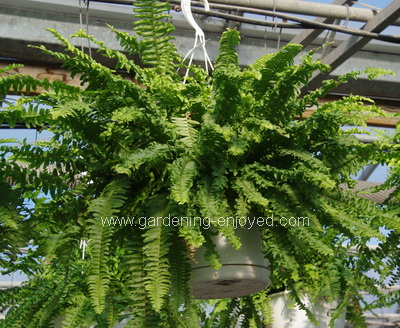
Category 1. Evenly moist at all times. These plants do not like to have their roots dry and will rapidly display their displeasure by dropping dry brown leaves as soon as the soil starts to dry out. Boston fern, Nephrolepis exaltata; English Ivy, Hedera helix; and most of the Ficus species are plants that fit into this category.
Category 2. Let the soil surface dry between waterings. They do not like to get their soil ball completely dry but rather have the water level reduced and then replenished. Most of the Dracaena species such as D. marginata and D. Massangeana and the Spathiphyllum varieties will be happiest under this schedule.
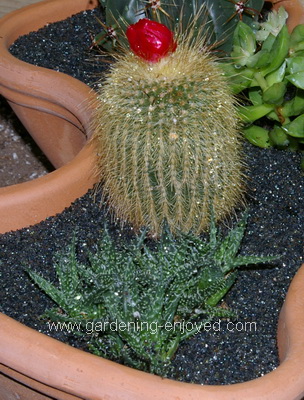
Category 3. Let the soil dry between waterings. These are arid climate plants that happily survive with an occasional flush of water. Most of the succulents such as Cacti and Euphorbia fall into this category. Over watering and saturated soils result in a fairly speedy demise for this category of plants.
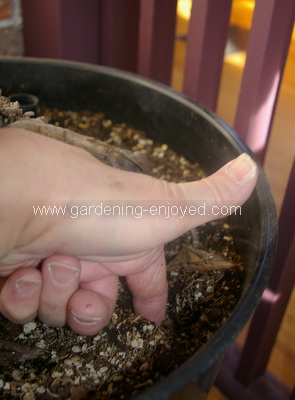
Now that you have some idea of your plants need for water, how do you tell when to supply more water. There are two easy methods. The first is failsafe and uses fairly standard equipment. Stick your finger into the soil and it will quickly determine whether it feels moisture or not. For category 1 plants you should water as soon as the soil surface feels dry. For category 2, the soil should feel quite dry about at least about an inch, (to your first knuckle,) into the soil. Then water. For category 3, you should not be able to detect moisture at all before you decide to add water.
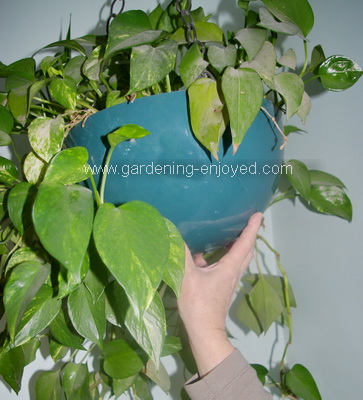 The other method keeps your finger cleaner but takes a bit more practice. Water is heavy. Learn to lift each plant as you are checking it for water and you will soon learn to tell the weight difference between a wet soil and a dry one. This is particularly useful for hanging baskets as you can just walk under, lift gently and determine whether you need to get out the ladder to water them.
The other method keeps your finger cleaner but takes a bit more practice. Water is heavy. Learn to lift each plant as you are checking it for water and you will soon learn to tell the weight difference between a wet soil and a dry one. This is particularly useful for hanging baskets as you can just walk under, lift gently and determine whether you need to get out the ladder to water them.
Summer? Winter?
It’s important not to get lulled into a sense of routine, although we all do it naturally. If your plants are in a space that is using natural light then you have to be aware of seasonal changes. A 10" pot with a Ficus tree in it may have been quite happy being watered once a week or less during the short day winter months. It will all of a sudden be under water stress in less than a week once the sun is stronger and stays with us for more hours each day. Be vigilant as the seasons change.
How Much is Enough
Now that we have some idea when to water our houseplants, the only question left is how much? I can irritate you again by saying, “As much as they need!” All houseplants should be growing in a pot that has drainage holes in the bottom. Each plant, when it needs water, should be given sufficient water so that some excess runs out that drainage hole. That ensures that the entire soil ball has been filled with water. Now, I realize, that can be a bit messy.
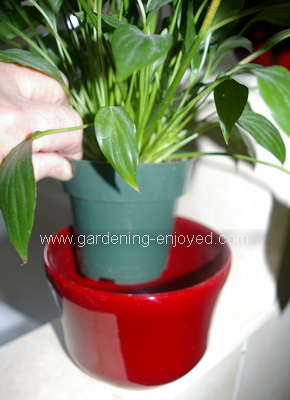
A water tight decorative planter or pot should hold the plant and its growing pot so that the mess on the floor is prevented. The problem that needs to be avoided here is standing water. A plant that is given so much water that the excess pours out the drainage hole and fills up the decorative container is in trouble. As soon as some water starts to drain you have provided the correct amount. The growing pot should never stand in a puddle. That will keep the air spaces in the soil filled with water but soil structure etc. is another story.
All of the above may sound a bit complicated or intensive but with a little practice, watering your plants becomes a rather easy and pleasant task. Walk around, ask each one what they would like and supply the appropriate amount. It’s quite a therapeutic exercise and one that has only good side effects.
return from Watering Houseplants to Indoor Gardening main page
